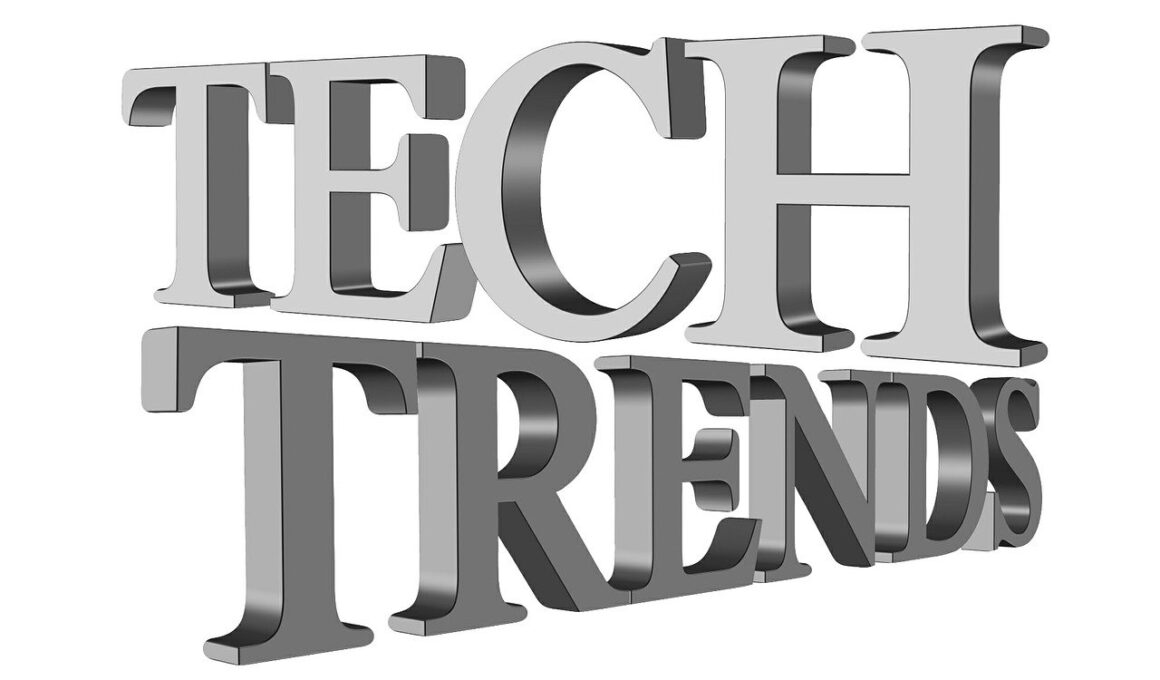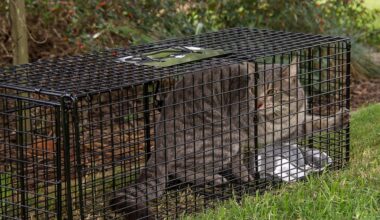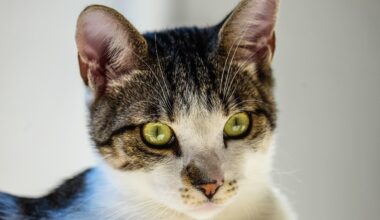Digital Scoring Systems Improving Transparency in Cat Shows
In the world of cat shows, jury transparency has become a pivotal concern. Traditional judging systems often leave participants confused and unsure about their evaluations. To address these issues, digital scoring systems have emerged as innovative technologies that enhance clarity. These systems incorporate various functionalities that streamline the judging process and are easy to interpret. By integrating real-time scoring and immediate updates, participants gain insights into their standings throughout the event. Moreover, these digital solutions are designed to minimize human errors and biases, creating a more level playing field for all competitors. This technological approach not only increases trust among participants but also garners greater audience involvement. With digital screens displaying live scores, spectators can engage with the event more fully, creating an immersive experience. Ultimately, the shift towards digital scoring systems represents a significant stride toward modernizing cat shows. As the industry evolves, expect to see broader implementations of these innovations, which aim to enhance the overall experience for every stakeholder involved in the vibrant world of cat shows. By bringing transparency to judging, digital systems cultivate a robust community of feline enthusiasts.
The impact of digital scoring systems extends beyond mere transparency; they also foster greater community engagement. As cat shows incorporate technology, viewers can witness the competition in real time. Transparency is not solely beneficial for the participants; it also enhances spectators’ understanding of scoring criteria and judging processes. This education encourages more people to attend events and develop an appreciation for cat shows. The accessibility of information allows onlookers to grasp the intricacies of breed evaluations, which can be tremendously engaging. Innovative technology enables curriculum enrichment during events, transforming standard viewing into active participation. For example, engaging interfaces allow attendees to explore each breed’s characteristics in depth. Additionally, the ability to compare scores cultivates a deeper level of interest and discussion among attendees. They can discuss scores among themselves, sharing insights and building camaraderie centered around their passion for feline excellence. Judges receive constructive feedback in this enriched atmosphere, prompting improvements in their evaluations. Overall, digital scoring systems cultivate a collaborative environment where enthusiasts, judges, and participants can interact. By integrating technology and transparency, cat shows will undoubtedly attract a wider audience in the future.
Another noteworthy advantage of implementing digital scoring systems in cat shows is the superior data management they offer. Traditional scoring methods often result in lengthy documentation processes that can become complicated and prone to error. Digital systems eliminate much of this difficulty by automating the data entry required for each judging evaluation. Records managed electronically streamline the organization and retrieval of information needed for event analysis. This level of efficiency significantly enhances administrative tasks, allowing event organizers to focus on delivering a top-notch experience. Furthermore, digital systems increase the accessibility of historical data regarding participants and their performance. This transparency not only builds trust among competitors but also allows competitors to analyze trends over the years. Participants can utilize past performance data to strategize for future competitions. With easy access to judges’ previous scores, competitors gain insights into what judges value. They can tailor their presentation to align with these preferences. Over time, the historical data amassed by digital scoring systems will contribute to refining evaluation techniques and scoring criteria. Ultimately, the knowledge gained through robust data management strengthens the entire cat show community.
Encouraging Ethical Judging Practices
Ethics play a crucial role in pet competitions, and digital scoring systems promote fairness and accountability among judges. The algorithms that drive these systems are specifically designed to showcase objectivity and fairness. As judges input scores and feedback digitally, the data is recorded in a manner that limits the potential for bias or favoritism. This transparency discourages unethical practices and encourages judges to make decisions based solely on merit. Furthermore, many digital systems include features such as anonymized scoring, wherein the identity of judges is concealed from competitors until necessary. This process ensures that evaluations are conducted impartially, instilling confidence in all participants. Additionally, these platforms can quickly flag discrepancies in scoring patterns, prompting reviews if unusual trends are detected. An ethical judging environment fosters competition integrity, allowing participants to feel that their efforts are acknowledged on an even ground. As the community embraces digital solutions, the commitment to ethical practices becomes increasingly ingrained. This shift represents a significant evolution in how cat shows are perceived and conducted, aligning them more closely with modern standards of fairness and equity.
The integration of digital scoring systems plays a significant role in enhancing the event atmosphere, making cat shows more enjoyable for all involved. With real-time displays, audiences become engaged with live updates and scores, creating an electrifying atmosphere. Spectators can freely respond to remarkable displays and performances, creating a vibrant ambience fueled by excitement. Onlookers become more than mere spectators; they transform into passionate supporters cheering for their favorites. This shift reinforces the sense of community present at cat shows, where enthusiasts share a mutual appreciation for feline beauty and talent. These digital tools also encourage interactive participation through social media, where scores and results can be shared among friends and fellow cat lovers. The rapid dissemination of scoring information allows for easy discussion and analysis online, fostering connections among people who may not be able to attend in person. The shared experience, even when virtual, enhances the feeling of belonging within the community. Consequently, cat shows become not just competitions but celebrations of feline culture that draw people together, irrespective of geographical barriers. These events captivate audiences and showcase the harmonious relationship between technology and tradition.
Future Perspectives in Cat Shows
Looking towards the future, the evolution of digital scoring systems presents a promising outlook for cat shows. As the technological landscape continues to advance, further innovations will emerge that could further refine judging methodologies. For instance, integration with artificial intelligence has the potential to analyze vast amounts of data and provide insights that are currently unattainable. This could lead to more standardized judging practices across the board, increasing confidence among participants in multiple regions. Additionally, mobile applications could allow participants to access scores, receive updates, and communicate with judges directly. Such innovations will make the experience seamless for everyone involved and solidify the role of technology in shaping the future of cat shows. Event organizers must remain abreast of these developments, adapting and evolving to meet changing expectations. Embracing technology does not merely ensure survival; it can lead to new avenues for creativity and excellence within the community. Exploring partnerships with tech companies specializing in event management may yield fruitful results for cat shows. Hence, as digital scoring systems lead the charge in transforming judging practices, the future of feline exhibitions appears bright.
The growing trend of digital scoring systems in cat shows heralds a new era, one underscored by transparency and engagement. By embracing these technologies, event organizers pave the way for more vibrant and fair competitions. Participants can trust that their hard work will be displayed and scored with the respect and attention it deserves. Furthermore, audiences gain more from these experiences as they engage with real-time data that allows them to immerse themselves in the event. The integration of technology fosters an atmosphere of excitement and camaraderie among attendees, turning every competition into a shared celebration of feline excellence. This spirit of community reinvigorates the cat show landscape, compelling enthusiasts to rally behind a shared passion. Digital scoring systems also provide the framework necessary to attract a younger demographic, who may be digital natives and prefer engaging with technology-rich environments. In doing so, cat shows can sustain their relevance in an ever-evolving entertainment landscape. In conclusion, the adoption of digital scoring systems represents a watershed moment for cat shows, intertwining tradition with innovation and paving the way for a more inclusive future.
Recognizing the importance of keeping up with advancements, cat show organizers must focus on training and implementing digital scoring systems effectively. Ensuring judges are well-versed in using technology will lead to smoother transitions to digital methods and encourage full confidence in the system. Continuous training programs will benefit both judges and staff, allowing them to adapt to changing technologies fruitfully. Additionally, organizations should consider creating support resources and documentation which may be valuable for those new to these systems. These resources could include instructional manuals, workshops, or informational videos, thus equipping participants and organizers alike with the necessary knowledge and assistance. Facilitating a collaborative learning experience will ensure everyone feels prepared to embrace the new digital landscape. Participants will appreciate the transparency that comes with well-implemented technologies while event organizers will garner a reputation for innovation. By promoting comprehensive training initiatives, organizers can establish an environment where digital scoring systems are viewed positively and embraced. Therefore, fostering engagement and awareness among all stakeholders yields a thriving community, representing the potential of cat shows in a modern age.


